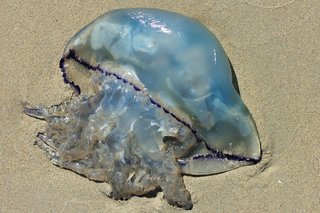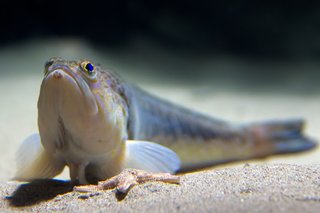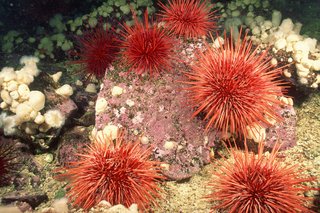Most stings from sea creatures in the UK are not serious and can be treated with first aid. Sometimes you may need to go to hospital.
What to do if you have been stung
Get help if possible
Ask a lifeguard or someone with first aid training for help.
If help is not available:
Do
-
rinse the affected area with seawater (not fresh water)
-
remove any spines from the skin using tweezers or the edge of a bank card
-
soak the area in very warm water (as hot as can be tolerated) for at least 30 minutes – use hot flannels or towels if you cannot soak it
-
take painkillers like paracetamol or ibuprofen
Don't
-
do not use vinegar
-
do not pee on the sting
-
do not apply ice or a cold pack
-
do not touch any spines with your bare hands
-
do not cover or close the wound
Non-urgent advice: Go to a minor injuries unit if you have:
- severe pain that is not going away
- been stung on your face or genitals
- been stung by a stingray
Immediate action required: Go to A&E or call 999 if you have been stung and have:
- difficulty breathing
- chest pain
- fits or seizures
- severe swelling around the affected area
- severe bleeding
- vomiting
- lightheadedness or loss of consciousness
Symptoms of sea creature stings
The main symptoms of sea creature stings are intense pain where you're stung and an itchy rash.
Jellyfish and Portuguese man-of-war stings can also cause raised circular areas on the skin (welts).
How to avoid being stung
Do
-
look out for beach warning signs
-
consider wearing a wetsuit when swimming in the sea, particularly during the spring and summer
-
wear waterproof shoes or sandals when walking in shallow water or rocky areas
-
scuff or stamp your feet when walking in shallow water to make sea creatures aware you're approaching
Don't
-
do not touch or handle sea creatures that sting
UK sea creatures that sting

Dovapi / Thinkstock
Pavlo Vakhrushev / Alamy Stock Photo

Arterra Picture Library / Alamy Stock Photo

MIKE THEISS/SCIENCE PHOTO LIBRARY

Arterra Picture Library / Alamy Stock Photo

Comstock Images / Thinkstock

Yann-HUBERT / Thinkstock
HUBERT YANN / Alamy Stock Photo
Page last reviewed: 1 May 2018
Next review due: 1 May 2021
